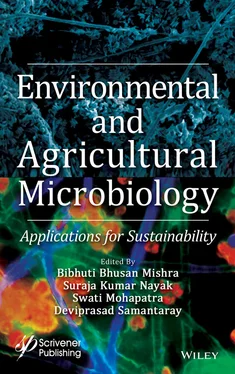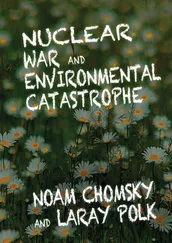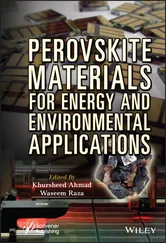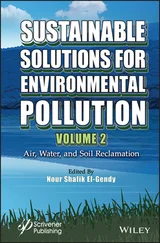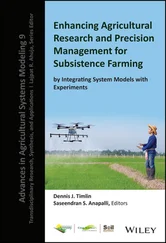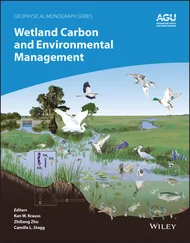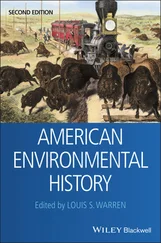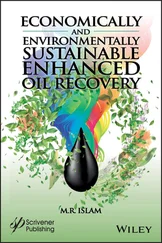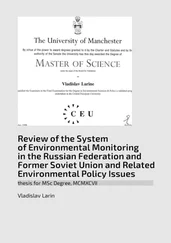5. Paul, D., Pandey, G., Pandey, J., Jain, R.K., Accessing microbial diversity for bioremediation and environmental restoration. TRENDS Biotechnol. , 23, 135, 2005.
6. Barkay, T. and Schaefer, J., Metal and radionuclide bioremediation: issues, considerations and potentials. Curr. Opin. Microbiol. , 4, 318, 2001.
7. Lloyd, J.R., Microbial reduction of metals and radionuclides. FEMS Microbiol. Rev. , 27, 411, 2003.
8. Chien, C.C., Lin, B.C., Wu, C.H., Biofilm formation and heavy metal resistance by an environmental Pseudomonas sp. Biochem. Eng. J. , 78, 132, 2013.
9. Ancion, P.Y., Lear, G., Lewis, G.D., Three common metal contaminants of urban runoff (Zn, Cu & Pb) accumulate in freshwater biofilm and modify embedded bacterial communities. Environ. Pollut. , 158, 2738, 2010.
10. Beech, I.B. and Cheung, C.S., Interactions of exopolymers produced by sulphate-reducing bacteria with metal ions. Int. Biodeter. Biodegr. , 35, 59, 1995.
11. Baker-Austin, C., Wright, M.S., Stepanauskas, R., McArthur, J.V., Co-selection of antibiotic and metal resistance. Trends Microbiol. , 14, 176, 2006.
12. Costley, S.C. and Wallis, F.M., Treatment of heavy metal-polluted wastewaters using the biofilms of a multistage rotating biological contactor. World J. Microbiol. Biotechnol. , 17, 71, 2001.
13. Nayak, S.K., Nayak, S., Patra, J.K., Rhizobacteria and its biofilm for sustainable agriculture: A concise review, in: New and Future Developments in Microbial Biotechnology and Bioengineering: Microbial Biofilms , M.K. Yadav and B.P. Singh (Eds.), pp. 165–175, Elsevier, Amsterdam, Netherlands, 2020.
14. Lovley, D.R. and Coates, J.D., Bioremediation of metal contamination. Curr. Opin. Biotechnol. , 8, 285, 1997.
15. Tchounwou, P.B., Yedjou, C.G., Patlolla, A.K., Sutton, D.J., Heavy metal toxicity and the environment, in: Molecular, clinical and environmental toxicology , A. Luch (Ed.), pp. 133–164, Springer, Basel, 2012.
16. He, Z.L., Yang, X.E., Stoffella, P.J., Trace elements in agroecosystems and impacts on the environment. J. Trace Elem. Med. Bio. , 19, 125, 2005.
17. Shallari, S., Schwartz, C., Hasko, A., Morel, J.L., Heavy metals in soils and plants of serpentine and industrial sites of Albania. Sci. Total Environ. , 209, 133, 1998.
18. Arruti, A., Fernández-Olmo, I., Irabien, Á., Evaluation of the contribution of local sources to trace metals levels in urban PM2. 5 and PM10 in the Cantabria region (Northern Spain). J. Environ Monit. , 12, 1451, 2010.
19. Pacyna, J.M., Monitoring and assessment of metal contaminants in the air, in: Toxicology of Metals , L.W. Chang, L. Magos, T. Suzuli (Eds.), pp. 9–28, CRC Press, Boca Raton, FL, 1996.
20. Rajaganapathy, V., Xavier, F., Sreekumar, D., Mandal, P.K., Heavy metal contamination in soil, water and fodder and their presence in livestock and products: a review. J. Environ. Sci. Technol. , 4, 234, 2011.
21. Gautam, R.K., Sharma, S.K., Mahiya, S., Chattopadhyaya, M.C., Contamination of heavy metals in aquatic media: transport, toxicity and technologies for remediation, in: Heavy Metals In Water: Presence, Removal and Safety , S. Sharma (Ed.), pp. 1–24, Royal Society of Chemistry, London, United Kingdom, 2014.
22. Wuana, R.A. and Okieimen, F.E., Heavy metals in contaminated soils: a review of sources, chemistry, risks and best available strategies for remediation. Isrn Ecology , 2011, 402647, 2011.
23. Agency for Toxic Substances and Disease Registry (ATSDR), Toxicological Profile for Arsenic TP-92/09 , Georgia: Center for Disease Control, Atlanta, 2000.
24. Tchounwou, P., Development of Public Health Advisories for Arsenic in Drinking Water. Environ. Health Rev. , 14, 211, 1999.
25. Centeno, J.A., Tchounwou, P.B., Patlolla, A.K., Mullick, F.G., Murakata, L., Meza, E., Yedjou, C.G., Environmental pathology and health effects of arsenic poisoning, in: Managing Arsenic in the Environment: From Soil to Human Health , R. Naidu, E. Smith, G. Owens, P. Bhattacharya, P. Nadebaum (Eds.), pp. 311–327, CSIRO Publishing, Collingwood, Australia, 2006.
26. Li, J.H. and Rossman, T.G., Inhibition of DNA ligase activity by arsenite: a possible mechanism of its comutagenesis. Mol Toxicol. , 2, 1, 1989.
27. Hartmann, A. and Speit, G., Comparative investigations of the genotoxic effects of metals in the single cell gel (SCG) assay and the sister chromatid exchange (SCE) test. Environ. Mol. Mutagen. , 23, 299, 1994.
28. IMO/FAO/UNESCO/WMO/WHO/IAEA/UN/UNEP, Joint Group of Experts on the Scientific Aspects of Marine Pollution: Report of the seventeenth session, Gesamp , World Health Organization, Geneva, Switzerland, (Reports and Studies No. 31), 1987.
29. Rajaram, R., Mathivanan, K., Rakesh, O.R., Bioremediation of cadmium pollution –A bacterial approach, in: Bacterial Biochemistry and Biotechnology , R.K. Gaur, H.K. Gautam, V.K. Gupta (Eds.), pp. 130–143, Lambert Academic Publishing, Saarbrücken, Germany, 2012.
30. Nayak, S.K., Dash, B., Baliyarsingh, B., Microbial Remediation of Persistent Agro-chemicals by Soil Bacteria: An Overview, in: Microbial Biotechnology , vol. II, J.K. Patra, G. Das, H.S.,. Shin (Eds.), pp. 275–301, Springer, Singapore, 2018.
31. Paschal, D.C., Burt, V., Caudill, S.P., Gunter, E.W., Pirkle, J.L., Sampson, E.J., Miller, D.T., Jackson, R.J., Exposure of the US population aged 6 years and older to cadmium: 1988–1994. Arc. Environ. Cont. Toxicol. , 38, 377, 2000.
32. Baselt, R.C. and Cravey, R.H., Disposition of Toxic Drugs and Chemicals in Man , 4th Edn., pp. 105–107, Year Book Medical Publishers, Chicago, IL, 1995.
33. Baselt, R.C., Verapamil, in: Disposition of Toxic Drugs and Chemicals in Man , 5th ed., pp. 876–878, Chemical Toxicology Institute, Foster City, CA, 2000.
34. IARC, Working Group on the Evaluation of Carcinogenic Risks to Humans, in: Some Industrial Chemicals , International Agency for Research on Cancer, Lyon (FR), (IARC Monographs on the Evaluation of Carcinogenic Risks to Humans, No. 60.), 1994.
35. Jacobs, J.A. and Testa, S.M., Overview of chromium (VI) in the environment: background and history, in: Chromium (VI) handbook , J. Guertin, J.A. Jacobs, C.P. Avakian (Eds.), pp. 1–21, CRC Press, Boca Raton, USA, 2005.
36. Patlolla, A.K., Barnes, C., Yedjou, C., Velma, V.R., Tchounwou, P.B., Oxidative stress, DNA damage, and antioxidant enzyme activity induced by hexavalent chromium in Sprague-Dawley rats. Environ. Toxicol. , 24, 66, 2009.
37. Velma, V., Vutukuru, S.S., Tchounwou, P.B., Ecotoxicology of hexavalent chromium in freshwater fish: a critical review. Environ. Health Rev. , 24, 129, 2009.
38. Agency for Toxic Substances and Disease Registry (ATSDR), Public Health Service , Department of Health and Human Services, Toxicological Profile for Lead, Atlanta: U.S, 1999.
39. Agency for Toxic Substances and Disease Registry (ATSDR), Case Studies in Environmental Medicine - Lead Toxicity , Public Health Service, U.S. Department of Health and Human Services, Atlanta, 1992, 2012.
40. Flora, S.J., Flora, G., Saxena, G., Environmental occurrence, health effects and management of lead poisoning, in: Lead , vol. 158, 2006.
41. Apostoli, P., Kiss, P., Porru, S., Bonde, J.P., Vanhoorne, M., Male reproductive toxicity of lead in animals and humans. ASCLEPIOS Study Group. Occup. Environ. Med. , 55, 364, 1998.
42. Clarkson, T.W., Magos, L., Myers, G.J., The toxicology of mercury—current exposures and clinical manifestations. New Engl. J. Med. , 349, 1731–1737, 2003.
Читать дальше
